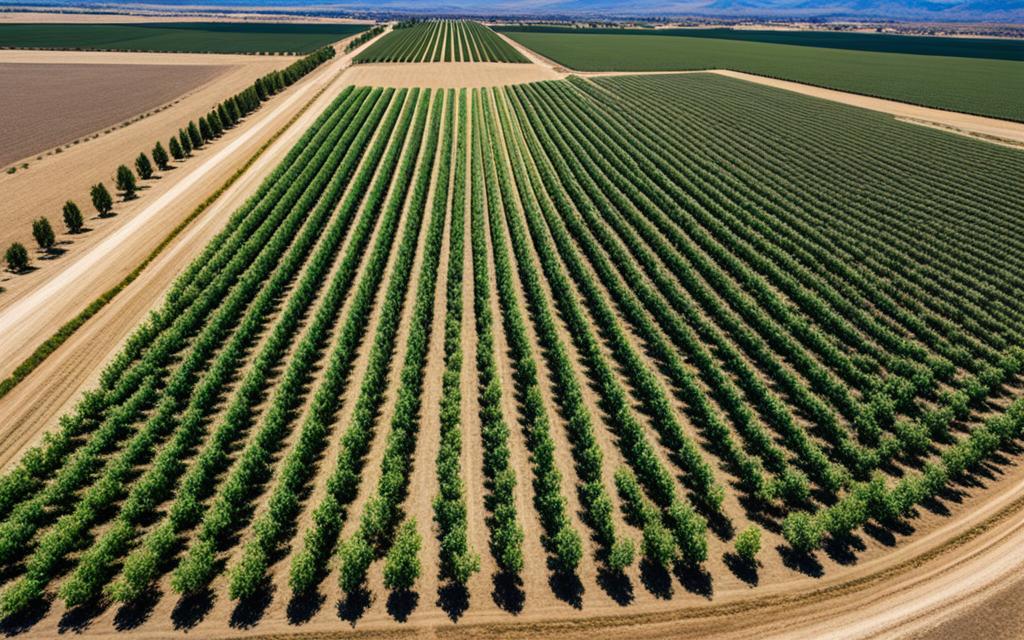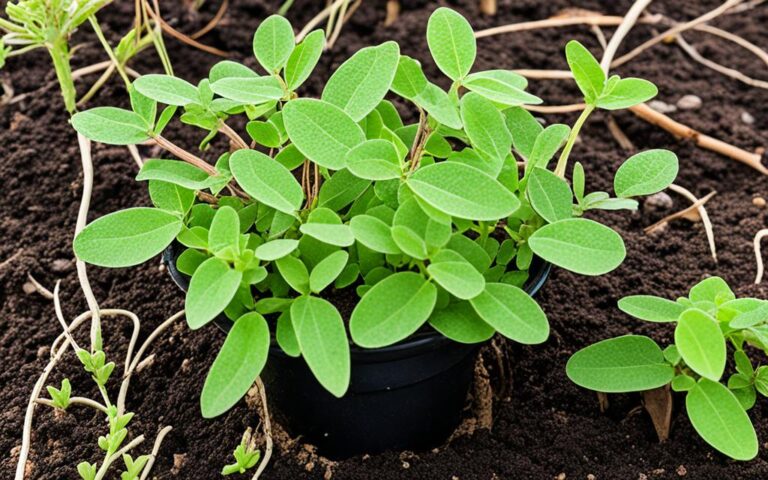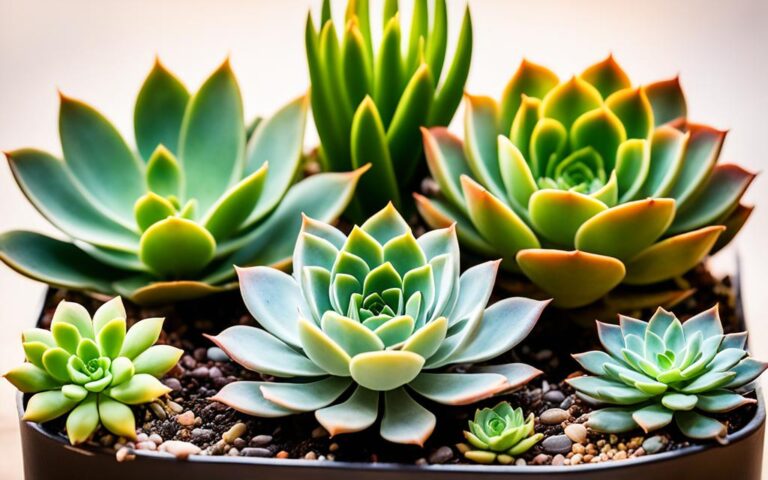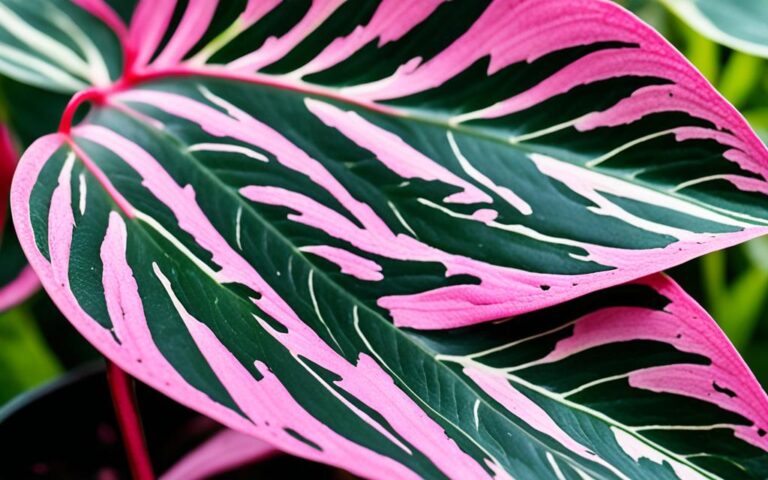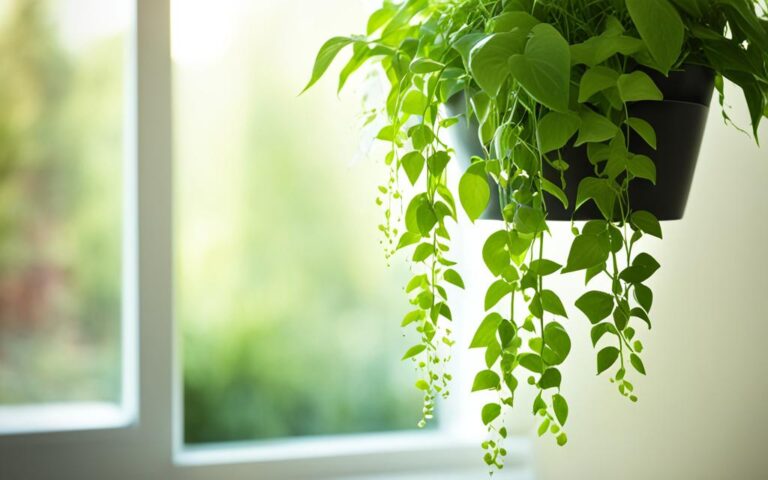Almond Plant: Growing and Caring for Almond Trees
Almond trees take about five years to grow big enough to produce nuts. This long wait is just one interesting part of growing these trees. They need the right temperature, soil, and water. They also have special ways of growing, making them a challenge and a reward for those who care for them.
Key Takeaways
- Almond trees have specific temperature, soil, and water requirements for optimal growth and nut production.
- There are various almond tree varieties with unique characteristics, including self-pollinating and late-blooming cultivars.
- Proper propagation, planting, and maintenance techniques are crucial for the long-term success of almond orchards and backyard plantings.
- Almond trees are susceptible to a range of pests and diseases that must be managed through integrated pest management strategies.
- Harvesting and storing almonds requires careful attention to ensure maximum quality and shelf life.
Introduction to the Almond Plant
Importance and Popularity
Almonds have been a key crop for thousands of years. They were first grown around 4,000 BC and were loved by ancient cultures like the Egyptians and Romans. The Bible also mentions almonds, where Aaron’s rod bloomed with flowers.
Today, California grows nearly 80% of the world’s almonds. This makes the almond plant a big deal in farming.
Interesting Facts about Almond Plants
The almond plant is quite interesting. What we call a nut is actually a stone fruit, not a true nut. It grows in a leathery green hull. It takes about five years for an almond tree to start producing nuts.
Almonds come in sweet and bitter types. The bitter ones have more amygdalin and prussic acid, which must be removed before eating.
Almonds were one of the first fruit trees to be domesticated. They can grow from seed without needing suckers or cuttings. This made them popular in the Mediterranean and in the U.S., where California grows most of the world’s almonds.
The almond industry is facing problems with honeybees due to Colony Collapse Disorder. This issue threatens the pollination needed for almonds. Climate change also worries farmers, as almonds need a lot of water and can be affected by drought.
“Almonds were one of the earliest domesticated fruit trees due to the ability to produce quality offspring entirely from seed, without using suckers and cuttings.”
Common Almond Tree Species and Varieties
The world of almond trees is full of variety, with many species and types. The bitter almond tree is not as common. But, sweet almond trees are the main attraction in nurseries and orchards.
Unique Characteristics of Popular Varieties
Some almond tree varieties are well-known for their special traits:
- All-In-One Almond: This tree grows only 12 to 15 feet tall and wide. It’s perfect for small areas.
- Garden Prince: It’s self-fertile and doesn’t get taller than 6 to 8 feet.
- Titan: This tree is tough and blooms late, which helps it avoid cold damage.
- Seaside: It blooms late and ripens early, reaching 14 feet high and is mostly self-fertile.
- Nikita’s Pride: A hardy almond from Ukraine, it can grow up to 20 feet tall.
These are just a few examples of the many almond tree types out there. Each one has its own special features. They suit different growing conditions, spaces, and personal tastes.
“Earlybird™ produces kernels 20% larger than Nonpareil and achieves a crackout rate 6% higher.”
With so many almond tree options, gardeners and growers can easily find the right one for their needs and likes.
Anatomy of the Almond Plant
The almond plant, known as Prunus dulcis, is a fascinating tree. It is the first stone fruit to bloom and is loved for its nuts. It also adds beauty to gardens with its pink or white flowers in spring.
Description of Leaves, Stems, and Flowers
The almond plant’s leaves are shaped like an oval and have a serrated edge. They are 3 to 5 inches long and 1 to 2 inches wide. The top side is dark green, and the bottom is lighter green. The stems are woody and can reach up to 15 feet tall, holding the leaves and flowers.
The almond plant’s flowers are beautiful, coming in pink or white. They bloom early in spring, often before the leaves come out. This makes the plant a stunning sight.
Special Features of the Almond Plant
Almond trees produce a fruit that’s not a true nut but a stone fruit. Inside this fruit is the almond “nut” surrounded by a leathery green hull. This hull splits open to reveal the hard shell with the edible almond seed inside.
Almond trees need specific temperatures to grow well. They require at least 300 hours below 45 degrees Fahrenheit, followed by a frost-free period. This makes them sensitive to cold and spring frosts, which can harm the flowers.
Almonds are rich in protein, making up 20% of their weight. They also have about 50% oil, mainly oleic and linoleic acids. Eating almonds may help prevent colon cancer, making them a great choice for a healthy diet.
| Almond Plant Characteristic | Description |
|---|---|
| Leaves | Oblong shape, 3-5 inches long, 1-2 inches wide, serrated edge, pointed tip |
| Stems | Woody, can grow up to 15 feet tall |
| Flowers | Fragrant, shades of pink or white, bloom in early spring |
| Fruit | Stone fruit (drupe), not a true nut, with a leathery green hull |
| Temperature Requirements | Needs at least 300 chilling hours below 45°F, followed by a long frost-free period |
| Protein and Oil Content | 20% protein, 50% oil (oleic and linoleic acids) |
Ideal Growing Conditions for Almond Plants
Almond plants need specific conditions to thrive. They love full sun, needing six to eight hours of direct sunlight daily. They also prefer soil that drains well and isn’t too wet or soggy. Heavy clay soils are not good for them.
For almonds to grow well, the climate matters a lot. They do best in USDA Plant Hardiness Zones 7 through 9. This means they love hot, dry summers for a long growing season. They also need about 200 to 500 “chill hours” each year. This is when the temperature is below 45°F (7°C), helping them break their dormancy.
Almond plants do well in deep, loamy soils but can adjust to other types if they drain well. Approximately 75% of almond roots are found in the top 0-16 inches of soil, while deeper roots at 1.5 meters depth significantly contribute to water uptake.
“Almonds require full sun, at least six to eight hours, and well-draining soil. The tree won’t tolerate clay soil.”
With enough sunlight, the right temperature, and good soil, almond plants can grow and produce a lot. Knowing these conditions is key to growing almonds successfully.
Propagation Methods for Almond Plants
Almond trees are mainly grown through budding, which is the best way to get plants that are true to type. This method involves joining a branch that produces fruit to a strong rootstock, often from peach or bitter almond. Using a strong rootstock helps the almond tree fight off soil diseases and grow faster than from seed.
Most almond types can’t grow true from seed because they are often sterile. But, there are other ways to grow them. For example, softwood cuttings can be used. These cuttings take about five to six weeks to root during the almond tree growing process.
Budding is another way to grow almond trees, done in late summer. In this method, a bud from one tree is joined to another tree’s rootstock. This way, the new tree gets the good traits of the parent tree.
- Almond trees can grow 4 to 10 m (13 to 33 ft) tall and live for 30 to 40 years in commercial settings.
- Almond trees start producing nuts in 3 to 4 years, after they bloom in the fall.
| Propagation Method | Description | Timing |
|---|---|---|
| Budding | T-budding where a bud from one variety is joined to the rootstock of another | Late summer |
| Grafting | Cuttings taken during dormancy are grafted to a suitable rootstock in spring | Spring |
Budding is the top way to grow almond trees, but grafting is also used. In grafting, cuttings are taken when the tree is dormant. Then, they are grafted onto a rootstock in spring.
“Propagation of almond trees is most commonly done by budding, with T-budding usually carried out in late summer where a bud from one variety is joined to the rootstock of another.”
Planting Almond Trees
Site Selection and Preparation
Choosing the right spot for almond trees is key to their growth. They do best in soils that drain well and have a pH of 6.0-7.0. Make sure to plant them 15 to 20 feet apart to let them spread out.
Before you plant, soak the roots in water to keep them moist. The hole should be big and deep enough for the roots. Be careful not to bend the tap root.
Planting Techniques
Plant almond trees at the same depth they were at the nursery. This is true for both bare-root and potted trees. After placing the tree in the hole, pack the soil around the roots firmly.
Give your new almond tree two buckets of water to help it settle. You can add a light fertilizer, but wait until spring if you planted in the fall.
| Almond Tree Variety | Chill Hours Required | Mature Height | Pollination Type |
|---|---|---|---|
| Hall’s Hardy | 600-800 | Varies | Cross-pollinating |
| All-In-One | N/A | 15 feet | Self-pollinating |
“Almonds are especially sensitive to tampering with their tap root, so they should never be trimmed or forced into a hole that’s not big enough to accommodate it.”
Care and Maintenance of Almond Trees
Keeping your almond tree healthy is key for a good harvest. It’s important to know how to care for and prune your almond tree. This will help it thrive for years.
Pruning and Training Techniques
Pruning your almond tree every year during its sleep is vital. It keeps it strong and full of life. Use clean pruning tools to cut out:
- Dead or broken branches
- Branches growing towards the middle of the tree
- Limbs, branches, and shoots blocking light and air from reaching the center of the tree
- Branches crossing one another
- Poorly angled or wide-angled branches that prevent the tree from growing in an upward shape
Training your almond tree right is also crucial. This means having a strong main leader and branches that spread out well. This setup helps the tree grow strong and gets more sunlight for nuts.
Looking after your almond tree well is important too. This means watching out for pests or diseases, using the right fertilizers, and watering it enough. Doing these things will make your almond trees healthier and more productive.
Pests and Diseases Affecting Almond Plants
Almond growers in California face many pests and diseases that can harm their plants. The navel orangeworm is a big problem. It’s a small moth whose larvae eat the almonds. To fight this, growers must remove and destroy mummy nuts in the fall or winter. They also use insecticides made just for the navel orangeworm.
Leafroller is another pest that hurts almond plants. It eats the buds. Almond trees can also get fungal diseases like canker, which can kill them. Other diseases, like anthracnose and leaf spot, can be stopped with fungicides.
| Pest/Disease | Description | Management Strategies |
|---|---|---|
| Navel Orangeworm | A small moth whose larvae bore into and feed on almonds |
|
| Leafroller | Pest that eats the buds of almond trees |
|
| Canker | Fungal disease that can kill almond trees |
|
| Anthracnose and Leaf Spot | Fungal diseases that can affect almond trees |
|
Good care for almond trees helps prevent diseases and pests. This includes picking the right site, watering and feeding them well, keeping weeds away, and pruning. Choosing almond trees that resist diseases also helps.
“Improper cultural care, like irrigation, can lead to almond tree issues.”
Fertilizers and Nutrients for Almond Plants
Keeping the right nutrient balance is key for almond plants to grow well and produce lots of nuts. They need both macronutrients and micronutrients to do well.
Macronutrient Requirements
Almonds need a lot of nitrogen (N), phosphorus (P), and potassium (K) to grow. Feed your almond trees in the spring with a balanced NPK fertilizer. Put it along the drip line of the tree. Use the amount suggested on the label, based on the tree’s age and size.
Young, first-leaf almond trees get no more than one ounce of nitrogen per dose. This should be given three to four times a year. Second-leaf trees can get up to two ounces of nitrogen per dose. The first dose is usually a granular type. For third-leaf and older trees, give about one ounce of nitrogen per tree each year.
Micronutrient Requirements
Almond plants also need important micronutrients like boron (B), zinc (Zn), and iron (Fe). These trace elements are vital for things like flower and fruit growth, root development, and tree health.
To make sure your almond plants get these micronutrients, use a balanced fertilizer that includes them. Or, add them as a separate supplement if needed, based on your orchard’s specific needs.
By giving your almond plants the right mix of macronutrients and micronutrients, you help them stay strong and productive. This leads to a great harvest every year.
Pesticides for Almond Plant Protection
Keeping almond plants healthy and productive often means using targeted pesticides. These chemicals are key in fighting off pests and diseases. This helps ensure a good harvest.
The navel orangeworm (NOW) is a big problem for almonds. Growers fight it with traps, monitoring, and mating disruption. This approach balances the economy and nature, using chemicals carefully to protect the environment.
New pesticides target specific pests without hurting almond plants or helpful insects. For example, Quadris Top fights almond diseases. Ridomil Gold SL controls diseases from the soil. Broadworks herbicide helps with weeds before and after they grow.
For insects, Besiege and Proclaim insecticides are great at controlling pests and worms. Warrior II with Zeon Technology also protects against many pests.
Movento insecticide by Bayer is a new solution for growers. It fights pests above ground and below, including nematodes that harm roots. Pest control advisors see healthier trees and better yields with Movento.
Using pesticides at the right time and place is key. It helps control pests without harming the environment. Staying up-to-date with the latest in pest control helps growers protect their orchards and get a good harvest.
Irrigation and Watering Needs of Almond Plants
Almond trees need a lot of water, especially when they’re growing nuts. They should get about 3 to 4 inches of water each week. This keeps the soil moist but avoids overwatering, which can cause root rot.
Drip irrigation is the best way to water almond plants. It delivers water right to the roots at the right times.
Almond trees need more water in early spring, summer, and sometimes in the fall. It’s important to stop watering about three to four days before harvest. This lets the nuts dry and mature properly.
- Early season water stress can hurt growth, including bud break and fruit set.
- Starting the season with soil almost full of water is common for almond growers.
- Almond trees handle water stress better during fruit growth.
- Not watering for two months before harvest can cut kernel weight by 10% and affect hull splitting.
Good irrigation is key for almonds. Water quality and availability affect yields. Growers in California’s Central Valley are using sustainable practices to save water and protect it.
“An almond tree requires 1 gallon of water to grow a single almond, compared to 3.5 gallons for a head of lettuce, 5 gallons for a walnut, and 660 gallons for a hamburger.”
Knowing how much water almond plants need helps growers keep plants healthy, improve nut quality, and protect the environment.
Almond Plant Pollination
Almond plants need pollination to grow well. Most almond types don’t pollinate themselves. They need another tree to help them make fruit.
To get a good harvest, growers plant two or more almond trees that bloom at the same time. This lets pollen move between flowers.
Self-Pollinating and Cross-Pollinating Almond Varieties
Experts suggest certain almond types that work well together for pollination. ‘All-In-One Almond’ is one that doesn’t need another tree. But, ‘Nonpareil’, ‘Carmel’, ‘Price’, and ‘Monterey’ are better for cross-pollination.
Honey bees are key to pollinating almonds. They need over 200,000 hives during the bloom. These bees help almonds grow and get the pollen they need for food.
| Almond Variety | Pollination Type | Bloom Time |
|---|---|---|
| Nonpareil | Cross-Pollinating | Early to Mid-Season |
| Carmel | Cross-Pollinating | Mid to Late Season |
| Price | Cross-Pollinating | Mid to Late Season |
| Monterey | Cross-Pollinating | Mid to Late Season |
| All-In-One Almond | Self-Pollinating | Early to Mid-Season |
Growers must think about their almond trees’ pollination needs. They work with beekeepers to help the pollination process. This helps them get a good harvest and supports the food system.
Harvesting Almond Nuts
Almond trees start making nuts when they are about four years old. As the fruits ripen, the hulls split open, showing the light-colored shells inside. This is a sign that the almonds are ready to be picked.
To get the almonds, farmers shake the tree branches. They use a long pole to tap the branches. This makes the ripe nuts fall onto sheets laid out below. This way, the nuts don’t get damaged.
After picking, it’s important to take the almonds out of their hulls right away. Then, they put the nuts in a drying tray. They leave them in the sun and wind for 3 to 4 weeks. This drying stops the nuts from getting moldy or sticky inside the shells.
When the almonds are dry, their shells should be easy to break and very crispy. This means they’re ready to be stored or eaten. The shells can stay on the nuts for a long time, keeping the kernels safe.
In California, almonds are picked from August to October. The exact time depends on the tree type and the weather. In the Mediterranean, it’s in August and September. In Australia, New Zealand, and South Africa, it’s in February and March.
After picking, the hulls and shells are reused. The hulls feed animals. The shells can be crushed for bedding or biomass. And the almonds can be turned into almond butter, flour, milk, and crackers.
| Key Almond Harvesting Facts | Details |
|---|---|
| Harvest Timing |
|
| Almond Tree Maturity |
|
| Harvesting Process |
|
| Almond By-Products |
|
Benefits of Growing Almond Plants
Almond plants are more than just a source of tasty nuts. They bring many benefits to any garden or orchard. These trees are valuable for their looks and their uses.
One big plus of having almond plants is their beauty. In spring, they bloom with fragrant flowers that brighten up the area. Their green leaves and elegant shape make them perfect for landscaping.
Almonds also carry deep cultural and religious meanings. They’ve been part of many traditions and celebrations over the years. Growing them helps keep these traditions alive.
Almond plants are also useful in many ways. The nuts are packed with vitamins, minerals, and healthy fats. You can eat them as a snack, add them to recipes, or use them in cooking.
Almond farming is good for the planet too. Farmers have cut water use by 33% since the 1990s. They aim to reduce it by another 20% by 2025. Almond trees also help by storing carbon dioxide, which is like taking 24 million cars off the road.
By growing almond plants, you get more than just nuts. These trees add beauty, cultural value, and practical uses to your space. Adding them to your garden or orchard brings many rewards and helps the environment.
Conclusion
Almond trees are great for gardens or homesteads, offering tasty nuts and beautiful spring flowers. They need the right climate and care to grow well. With the right knowledge, gardeners can enjoy these trees for many years.
Almonds are full of healthy fats, antioxidants, vitamins, and minerals. They help keep your heart healthy and support a good gut. Studies show almonds can help with anemia, blood sugar, and anxiety.
Growing almond trees adds beauty and nutrition to your life. By planting and caring for them well, you can get a big harvest. This makes growing almonds a rewarding and fun experience.
